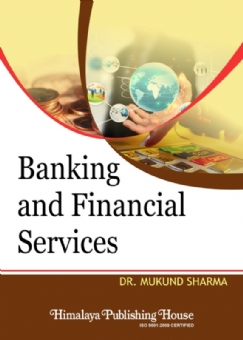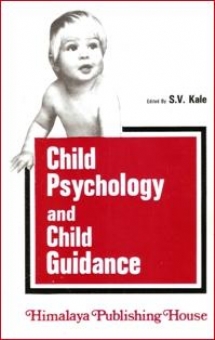It gives us immense pleasure to place in your hand, the much awaited and thoroughly revised enlarged edition of our book titled ‘Import Export Procedures & Documentation’ under a new title “Foreign Trade – Theory, Procedures, Practices and Documentation” to justify its extended scope and contents.
The book has been divided into Four Units – International Marketing Environment, Introduction to International Marketing, Framework for India’s Foreign Trade and Foreign Trade Procedures, each having five inter-related chapters. The book exclusively deals with the issues pertaining to export import trade and documentations. Attempts have been made to simplify complicated procedures without diluting the contents of the Policy declared by the Government.
Contents :
UNIT – 1 : INTERNATIONAL MARKETING ENVIRONMENT
Chapter 1 – Evolution of International Trade
1.1 Introduction, 1.2 Interdependence of Countries, 1.3 Internal Trade vs. International Trade, 1.4 Classical Theory of International Trade, 1.5 Theory of Absolute Cost Differences or Advantages, 1.6 The Ricardian Theory of Comparative Costs, 1.7 Gains from International Trade, 1.8 Comparative Costs Doctrine Expressed in Terms of Money, 1.9 Evaluation of the Classical Theory of International Trade, 1.10 Do We Need a Special Theory of International Trade?, 1.11 General Equilibrium Theory of International Trade, 1.12 Exchange Rate Mechanism and International Trade, 1.13 A Complex Model of Ohlin, 1.14 Criticisms of the Modern Theory of International Trade, 1.15 Superiority of the Modern Theory of International Trade, 1.16 Porter’s National Competitive Advantage Theory, 1.17 Product Life Cycle Theory
Chapter 2 – International Trade Environment
2.1 Meaning of International Trade Environment, 2.2 Components of International Trade Environment, 2.3 Demographic Environment, 2.4 Social Environment, 2.5 Cultural Environment, 2.6 Hofstede’s Cultural Dimension Theory, 2.7 Economic Environment, 2.8 Political Environment, 2.9 Legal Environment, 2.10 Technological Environment, 2.11 Competitive Environment, 2.12 Michael Porter’s Five Forces Analysis, 2.13 PEST Analysis for International Market
Chapter 3 – International Trade Organisations
3.1 General Agreement on Tariffs and Trade (GATT), 3.2 Uruguay Round of GATT (1986-93), 3.3 Objectives of the World Trade Organisation (WTO), 3.4 Principles of the WTO, 3.5 Functions of WTO, 3.6 GATT vs. WTO, 3.7 Pros of WTO, 3.8 Cons of WTO, 3.9 WTO Ministerial Conferences, 3.10 Doha Declaration, 3.11 United Nations Co-operation for Trade and Development (UNCTAD), Appendix
Chapter 4 – Regional Economic Groupings
4.1 Concept of Trade Barriers, 4.2 Objectives of Trade Barriers, 4.3 Types of Tariff Trade Barriers, 4.4 Types of Non-tariff Trade Barriers, 4.5 Tariff Trade Barriers vs. Non-tariff Trade Barriers, 4.6 Effects of Trade Barriers, 4.7 Concept of Regional Economic Groups, 4.8 Types of Regional Economic Groups, 4.9 Positive Effects of Regional Economic Groups, 4.10 Negative Effects of Regional Economic Groups, 4.11 Major Trade Blocs, 4.12 South Asian Free Trade Area (SAFTA), Appendix
Chapter 5 – Globalisation, FDI and MNCs
5.1 Understanding LPG Model, 5.2 Concept of Globalisation, 5.3 Features of Globalisation, 5.4 Stages of Globalisation, 5.5 Concept of Multinational Corporations (MNCs), 5.6 Merits of MNCs, 5.7 Demerits of MNCs, 5.8 MNCs in India, 5.9 Concept of Foreign Direct Investment (FDI), 5.10 Role and Functions of FDI in Developing Countries, 5.11 Factors Influencing FDI, 5.12 FDI Operations in India, 5.13 FDI Policy in India, 5.14 Make in India, 5.15 Foreign Investment Promotion Board (FIPB), 5.16 Foreign Investment Promotion Council (FIPC)
UNIT – 2 : INTRODUCTION TO INTERNATIONAL MARKETING
Chapter 6 – Introduction to International Marketing
6.1 Concept of International Marketing, 6.2 Features of International Marketing, 6.3 Drivers of International Marketing, 6.4 Importance of International Marketing, 6.5 Motivation for Internationalisation, 6.6 Orientations of International Marketing, 6.7 Phases of International Marketing, 6.8 Process of International Marketing, 6.9 Concept of International Marketing Research, 6.10 Need for International Marketing Research, 6.11 International Marketing Research Process, 6.12 Scope of International Marketing Research, 6.13 Special Problems of International Marketing, 6.14 Domestic Marketing vs. International Marketing, 6.15 ‘12C’ Framework for International Marketing, 6.16 Concept of International Service Marketing, 6.17 Characteristics of Services, 6.18 ‘7Ps’ of International Service Marketing, 6.19 Features of International Service Marketing, 6.20 Need for International Service Marketing, 6.21 Drivers of Global Service Marketing, 6.22 A Note on Service Culture
Chapter 7 – Product Decisions
7.1 Concept of International Marketing Mix, 7.2 Product Planning Decisions, 7.3 Product Planning Strategies, 7.4 Importance of Product Planning, 7.5 New Product Development Process, 7.6 Product Life Cycle, 7.7 Concept of Branding, 7.8 Role of Branding, 7.9 Branding Decisions, 7.10 Brand Piracy, 7.11 Concept of Packing and Packaging, 7.12 Requisites of Good Packaging, 7.13 Functions of Packaging, 7.14 Factors Influencing Packaging Decisions, 7.15 Types of Packing Materials, 7.16 Concept of Transport Packing, 7.17 Materials for Transport Packing, 7.18 Containerisation, 7.19 Role of Indian Institute of Packaging (IIP), 7.20 Marking and Labelling, 7.21 Product Warranties and After-sales Service
Chapter 8 – Pricing Decisions
8.1 Concept of Pricing, 8.2 Factors Affecting Pricing Decisions, 8.3 Importance of Pricing Decisions, 8.4 Methods of Costing in International Market, 8.5 Elements of Cost in Pricing Goods for International Market, 8.6 Export Pricing Strategies, 8.7 INCOTERMS 2020 or Export Price Quotations, 8.8 FOB Quotation vs. CIF Quotation, 8.9 Skimming Pricing vs. Penetration Pricing, 8.10 Break-even Analysis, 8.11 Information Required for Pricing in International Market, 8.12 Computation of FOB, CF and CIF Price, 8.13 Impact of Incentives on Export Pricing
Chapter 9 – Distribution Channel Decisions
9.1 Concept of International Market Segmentation, 9.2 Importance of International Market Segmentation, 9.3 Bases of International Market Segmentation, 9.4 Components of International Logistics, 9.5 Meaning of Channels of Distribution, 9.6 Levels of Distribution Channel, 9.7 Types of Distribution Channels, 9.8 Direct Marketing, 9.9 Indirect Marketing, 9.10 Direct Exporting vs. Indirect Exporting, 9.11 Factors Influencing Channel Selection, 9.12 Export Marketing Development through Internet, 9.13 Benefits of Export Marketing Development through Internet, 9.14 Warehousing and its Necessity in International Trade
Chapter 10 – Promotion Decisions
10.1 International Product Positioning, 10.2 Product Positioning Strategies, 10.3 Concept of Product Promotion, 10.4 Techniques of Product Promotion, 10.5 Factors Affecting Product Promotion, 10.6 Role of Promotion Mix, 10.7 Planning International Promotion Campaign, 10.8 Barriers to International Promotion, 10.9 International Advertising Programme, 10.10 International Trade Fairs and Exhibitions, 10.11 Indian Trade Promotion Organisation (ITPO), Appendix
UNIT – 3 : FRAMEWORK FOR INDIA’S FOREIGN TRADE
Chapter 11 – Regulatory Framework for Foreign Trade
11.1 Introduction, 11.2 Laws Governing India’s Export Import Trade, 11.3 The Customs Act, 1962, 11.4 The Export Quality (Control and Inspection) Act, 1963, 11.5 The Foreign Trade (Development and Regulation) Act, 1992, 11.6 The Foreign Exchange Management Act, 1999, 11.7 Foreign Exchange Management (Export of Goods and Services) Regulations, 2000, 11.8 The Arbitration and Conciliation Act, 1996, 11.9 International Commercial Practices, 11.10 Central Board of Excise and Customs, 11.11 Export Inspection Council (EIC), 11.12 Indian Council of Arbitration (ICA), Appendix
Chapter 12 – India’s Foreign Trade Policy
12.1 Introduction, 12.2 General Objectives of EXIM Policy, 12.3 Foreign Trade Policy – A Snapshot, 12.4 EXIM Policy, 1992-97, 12.5 EXIM Policy, 1997-2002, 12.6 Foreign Trade Policy, 2004-2009, 12.7 Foreign Trade Policy, 2009-2014, 12.8 Foreign Trade Policy, 2015-2020, 12.9 Foreign Trade Policy, 2023, 12.10 Trade Facilitation and Ease of Doing Business, 12.11 Privileges of Status Holders, 12.12 Negative List of Exports, 12.13 Negative List of Imports, 12.14 Board of Trade
Chapter 13 – Institutional Framework for Foreign Trade
13.1 Institutional Framework for Foreign Trade, 13.2 Role of Export Promotion Organisations, 13.3 Department of Commerce, 13.4 Directorate General of Foreign Trade (DGFT), 13.5 Directorate General of Commercial Intelligence and Statistics (DCI&S), 13.6 Agricultural and Processed Food Products Development Authority (APEDA), 13.7 Marine Products Export Development Authority (MPEDA), 13.8 Export Promotion Councils (EPCs), 13.9 Commodity Boards (CBs), 13.10 Indian Institute of Foreign Trade (IIFT), 13.11 Federation of Indian Export Organisations (FIEO), 13.12 National Centre for Trade Information (NCIT), 13.13 State Trading Corporation of India (STC), 13.14 Chamber of Commerce (CoC), 13.15 States Involvement in Promoting Foreign Trade, Appendices
Chapter 14 – International Trade Documents
14.1 Introduction, 14.2 Aligned Documentation System (ADS), 14.3 Proforma Invoice, 14.4 Commercial Invoice, 14.5 Packing List, 14.6 Shipping Bill, 14.7 Certificate of Origin, 14.8 Consular Invoice, 14.9 Certificate of Origin vs. Consular Invoice, 14.10 Commercial Invoice vs. Consular Invoice, 14.11 Mate’s Receipt, 14.12 Bill of Lading, 14.13 Mate’s Receipt vs. Bill of Lading, 14.14 Guaranteed Remittance (GR) Form, 14.15 Bill of Exchange, 14.16 Airway Bill, 14.17 Import Documents, Specimen of Export Documents
Chapter 15 – Policy Assistance and Incentives
15.1 Incentives and Assistance for Exporters, 15.2 Duty Drawback (DBK), 15.3 Export Promotion Capital Goods (EPCG) Scheme, 15.4 Towns of Export Excellence (TEE), 15.5 Developing Districts as Export Hubs, 15.6 Deemed Exports, 15.7 Export Oriented Units (EOUs), Electronic Hardware Technology Parks (EHTPs), Software Technology Parks (STPs) and Bio-technology Parks, 15.8 Agri Export Zones (AEZs), 15.9 Special Economic Zones (SEZs), 15.10 Benefits Enjoyed by SEZs, 15.11 Quality Control and Trade Disputes (QCTD), 15.12 Special Chemicals, Organism, Materials, Equipment and Technologies (SCOMET), 15.13 Assistance to States for Developing Export Infrastructure and Allied Activities (ASIDE), Appendix
UNIT – 4 : FOREIGN TRADE PROCEDURES
Chapter 16 – India’s Foreign Trade
16.1 Introduction, 16.2 Significance or Merits of Foreign Trade, 16.3 Demerits of Foreign Trade, 16.4 Growth of India’s Foreign Trade, 16.5 Direction of India’s Exports, 16.6 Direction of India’s Imports, 16.7 Major Exports (Commodities) of India, 16.8 Major Imports (Commodities) of India, 16.9 Major Exports (Services) of India, 16.11 Prospects for India’s Foreign Trade Development, 16.12 Challenges to India’s Foreign Trade Development, Appendices
Chapter 17 – Preliminaries for Export
17.1 Meaning of Exports and Imports, 17.2 Classification of Exports and Imports, 17.3 Categories of Exporters, 17.4 Strategy and Preparation for Foreign Trade, 17.5 Identifying Foreign Markets, 17.6 International Market Selection Process, 17.7 Methods of Entering International Market, 17.8 Constraints in Entering Foreign Markets, 17.9 Export Contract, 17.10 Force Majeure in Export Contract, 17.11 Exchange Earner’s Foreign Currency (EEFC) Account
Chapter 18 – Export Procedure
18.1 Introduction, 18.2 Registration Procedure, 18.3 Pre-shipment Procedure, 18.4 Shipment Procedure, 18.5 Post-shipment Procedure (Realisation of Export Proceeds), 18.6 Export Procedure under GST Regime, 18.7 Quality Control and Pre-shipment Inspection, 18.8 Objectives of Quality Control and Pre-shipment Inspection, 18.9 Methods of Quality Control and Pre-shipment Inspection, 18.10 Procedure for Pre-shipment Inspection, 18.11 Procedure for Shipping and Customs Clearance, 18.12 Marine Insurance Policy, 18.13 Procedure for Marine Insurance Policy, 18.14 Types of Marine Insurance Policies, 18.15 Procedure for Filing Marine Insurance Claim, 18.16 Importer Exporter Code (IEC) Number, 18.17 Registration-cum-Membership Certificate (RCMC), 18.18 Role of Customs House Agents (CHAs), 18.19 Exchange Rate Fluctuation Risks, 18.20 Forward Contracts, 18.21 ISO 9000 Certification, 18.22 Procedure for Obtaining ISO 9001 Certification
Chapter 19 – Methods of Payments and Export Finance
19.1 Conditions for Realisation of Export Proceeds, 19.2 Factors Affecting Export Payment Terms, 19.3 Methods of Export Payment, 19.4 Letter of Credit, 19.5 Procedure for Opening Letter of Credit, 19.6 Types of Letter of Credit, 19.7 Advantages of Letter of Credit, 19.8 Types of Export Finance, 19.9 Pre-shipment Finance, 19.10 Features of Post-shipment Finance, 19.11 Procedure for Obtaining Export Finance, 19.12 Pre-shipment Finance vs. Post-shipment Finance, 19.13 Institutional Framework for Export Finance, 19.14 Role of Commercial Banks in Export Finance, 19.15 Role of EXIM Bank in Export Finance, 19.16 Forfeiting Scheme of EXIM Bank, 19.17 Role of SIDBI in Export Finance, 19.18 Risks in Export Marketing, 19.19 Export Credit and Guarantee Corporation (ECGC) of India, 19.20 Role of ECGC in Export Credit Insurance for Exporters, 19.21 Role of ECGC in Providing Finance to Exporters
Chapter 20 – Import Procedure
20.1 Introduction, 20.2 Categories of Importers, 20.3 Import License, 20.4 Import of Samples, 20.5 Import Contract, 20.6 Pre-Import Procedure, 20.7 Legal Dimensions of Import Procedure, 20.8 Retirement of Import Documents, 20.9 Customs Clearance for Imported Goods, 20.10 Warehousing of Imported Goods, 20.11 Exchange Control Provisions for Imports, 20.12 Import Risks, 20.13 Import Duties, 20.14 Valuation for Customs Duty, 20.15 Import Incentives under Special Schemes, 20.16 Import of Personal Baggage, 20.17 Import of Gifts
Glossary







